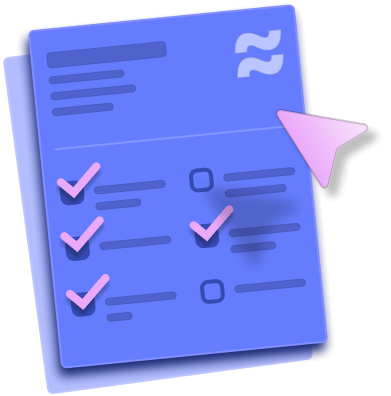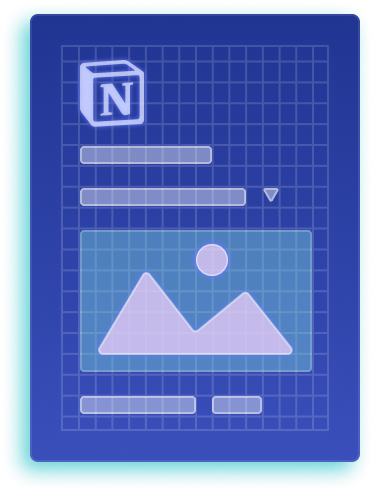Webflow React Integration
React components can help upgrade your user inteface on Webflow if integrated properly.

.svg)

.svg)


.svg)
About React
React is an open-source JavaScript library for building user interfaces or UI components. It was developed and is maintained by Facebook. React is commonly used for developing single-page applications where the user interacts with the page without reloading it. It's particularly well-suited for building dynamic and responsive user interfaces.
Why Integrate React with Webflow
Integrating React with Webflow can provide a powerful combination for building dynamic and interactive websites. Webflow is a visual web design platform that allows users to create responsive websites without needing to code. On the other hand, React is a JavaScript library for building user interfaces, often used for creating single-page applications with dynamic content. Here are some reasons why integrating React with Webflow can be beneficial:
- Dynamic User Interfaces: React excels at creating dynamic and responsive user interfaces. By integrating React with Webflow, you can enhance the interactivity and user experience of your Webflow sites. React allows for the creation of reusable components, making it easier to manage complex UI elements and update them dynamically.
- Component Reusability: React's component-based architecture promotes reusability. You can create React components for specific UI elements or features and reuse them across different pages of your Webflow site. This can lead to a more modular and maintainable codebase.
- State Management: React provides a robust mechanism for managing the state of your application. This is particularly useful when dealing with dynamic content, form submissions, or any interaction that requires real-time updates. React's state management helps ensure that your Webflow site remains responsive and up-to-date.
- Custom Functionality: While Webflow allows for visually designing and structuring websites, there might be cases where you need custom functionality or specific behavior that goes beyond the capabilities of Webflow's native features. Integrating React enables you to implement custom JavaScript logic and handle more advanced functionalities.
- API Integrations: React can be easily integrated with external APIs to fetch and display dynamic content on your Webflow site. This is beneficial for incorporating data from external sources, such as databases, content management systems, or third-party services.
- SEO Optimization: While Webflow provides SEO-friendly features, React can be used to build single-page applications (SPAs) that dynamically update content without requiring a full page reload. This can enhance the user experience and potentially positively impact SEO rankings.
- Development Flexibility: If you have a development team experienced with React, integrating it with Webflow allows you to leverage the skills and tools already in use. This can streamline the development process and provide greater flexibility in implementing custom solutions.
{{cta}}
Common Challenges When Integrating React with Webflow
Here's something to pay attention to if you want to integrate React with Webflow:
- Clashing of JS Libraries: Webflow may use its own JavaScript libraries for animations, interactions, or other features. When integrating React, conflicts may arise if both React and Webflow's JavaScript libraries are trying to manipulate the DOM. This can result in unexpected behavior or errors.
- CSS Styling Conflicts: Webflow has its own styling system, and integrating React components may lead to conflicts in styling approaches. This can result in inconsistencies in the appearance of components and may require careful management of styles to ensure a cohesive design.
- Handling Webflow Interactions:Webflow allows for the creation of complex interactions and animations visually. Integrating React components may require special handling to ensure that Webflow interactions and animations still work as expected.
- SEO Challenges in SPAs: If React is used to create a single-page application (SPA) within a Webflow site, there can be challenges related to search engine optimization (SEO). SPAs often rely on client-side rendering, and ensuring proper indexing by search engines may require additional measures such as server-side rendering.
- Component Integration: Integrating React components into Webflow might involve challenges in terms of embedding components seamlessly and passing data between them. Ensuring smooth communication between Webflow elements and React components is essential for a cohesive user experience.
- Responsive Design Compatibility: Webflow excels at creating responsive designs, and integrating React components should not compromise this feature. Developers need to ensure that React components are responsive and adapt well to different screen sizes, aligning with Webflow's responsive design principles.
- Workflow and Collaboration: Combining the visual design capabilities of Webflow with React's programmatic approach can sometimes lead to workflow challenges, especially when working in a team. Coordinating changes made in the Webflow designer with the development of React components requires effective communication and collaboration.
- Versioning and Updates: Both Webflow and React may receive updates, and maintaining compatibility between the versions of these tools can be a challenge. Developers need to stay informed about updates in both Webflow and React and ensure that their integration remains compatible.
How to Connect React and Webflow
Adding Reach to Webflow is a difficult and code-intensive process. If you want to see how to do it step-by-step, check out this fantastic blog published on Webflow.
The tutorial covers the following key steps:
Setting up a React project:
- Creating project folders, initializing npm, and installing React and React-DOM.
- Structuring the project with src and dist directories.
- Creating an index.html file in the dist directory for rendering React components.
Creating a simple React component:
- Writing a basic React component in index.js.
- Using ReactDOM to render the React component in the specified HTML target div.
Setting up Webpack:
- Installing Webpack and its dependencies.
- Configuring Webpack to bundle the React application and serve it with a development server.
Configuring Babel:
- Installing Babel and its presets for using modern JavaScript features.
- Creating a .babelrc file for Babel configuration.
Deploying with Amazon S3:
- Setting up an S3 bucket and configuring it for public access.
- Installing AWS CLI and configuring it with necessary credentials.
- Creating build and deploy scripts to bundle and deploy the React app to S3.
Loading React and bundled app in Webflow:
- Adding script tags to load React and React DOM in the head section of the Webflow project.
- Linking the compiled bundle.js file hosted on S3 in the body section.
- Creating a target div with a specified ID for rendering the React component.
Deploying the Webflow project:
- Deploying the Webflow project to see the React app rendering within the specified div.
Feel free to get in touch with Flow Ninja to learn if we can help you on your project.
Webflow Requirements
You'll need a paid pricing plan in order to be able to integrate React components
{{cta}}





The 2025 Playbook for Website Customer Acquisition
.png)

.png)

in mind?
Talk with our team and learn how your ideas can become digital experiences.
Your go-to Webflow
resources library
Webflow projects where we made React integration
Check Other Webflow integrations
Other relevant integrations
We get asked these questions often
Can you integrate React with Webflow?
Yes, it is possible to integrate React with Webflow. While Webflow primarily focuses on visual design and front-end development without coding, React is a JavaScript library used for building user interfaces, especially for creating dynamic and interactive web applications. Integrating React with Webflow allows you to leverage the strengths of both tools.
.svg)

.png)
.png)
.svg)
.svg)
.svg)
.webp)
.svg)





